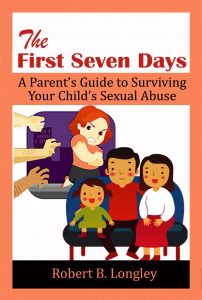
Sexual Assault
CNN recently reported that military sexual assaults at our military academies was up 60% over last year. I’m probably one of the few people that read this and thought it was potentially a good thing. Here’s the logic. Awareness increases reporting. A few years ago, the Hartford public schools started asking children if they had been sexually abused and the number of reported cases went through the roof. I believe we have a similar example here.
Scary Stuff
This is the scary place for any organization. People assume that the reported quantity of something is pretty reliable. Murders, robberies, kidnappings are generally around 100% reported. Sexual assaults on the other hand tend to hover around 15-20% . The reasons tend to be pretty standard: fear of not being believed, social pressure, embarrassment, fear of retaliation, etc.
Add in the pressures of a Military Academy and the reported percentages are probably lower than national averages. Since people’s perception is that whatever number is reported is 100%, the public opinion poll says there is an increase in incidents. In reality, it’s just an increase in reported incidents. The hard part is educating people on the difference.
I can’t say for certain that this is what is happening at the academies, but I would put money on it. This is the cycle that organizations go through. I’m sure someone in a position of power is taking the literal view of things and is probably targeting the Director of Sexual Assault Prevention, Major General Hertog. I hope she can take the heat long enough to educate any critics that may be out there. The biggest challenge to fixing the problem is getting people to recognize exactly how big the problem is.
Let us know if we can help you dealing with your family’s sexual abuse victim situation. For ideas to get started please check out our book on what to do during the early days after disclosure.

Parenting, Sexual Abuse
A few months ago the phrase “Jerry’s Kids” brought to mind a charitable organization that has helped children for years. Now it’s more aptly associated with Jerry Sandusky and the Penn State sexual assault victims. There are some interesting parallels. Both center around non profit agencies for children. The question of motivation is where things get muddy. Both organizations clearly value and try to further the interests of children. It’s still mind boggling when organizations with an unquestionable purpose actually turn out to have a dark side.
I use the term mind boggling figuratively. But there is a very real component of this conflict of reality that most people’s brains can’t comprehend both conditions existing. The brain tends to be binary in it’s early stages of learning. There are good people and bad people. The possibility of both existing within the same person is a concept that the brain would rather ignore than accept because it violates the rules.
Brain Damage
If you are a Star Trek fan you will remember an episode where an entity takes over the computer. The crew is able to destroy the evil entity by giving the computer an impossible problem to solve. It basically crashes (Sorry for the spoiler if you are just rediscovering the Star Trek series). People’s brains do the same thing. They want to crash and reboot when they encounter something that shouldn’t be possible. If you have ever lost work when your computer crashes, memories can equally be lost when our brains try to convince us that what we experience is not real and should therefore be ignored. This is one of the reasons why so many people come forward years later. Pieces of new information allow them to recognize events as real.
In our daily lives we are surrounded by organizations that are setup to serve children. The assumption is that their purposes are purely motivated and they are run by good people. It’s a reasonable assumption that is generally true until it isn’t. What’s even more confusing is that the children who are often getting the most positive attention, are also the ones who are being abused. We all need to get our brains to recognize that the lines between good and bad frequently blur. The sooner we can identify this incongruency in the organizations that serve children, the sooner we can begin to deal with the evil entities that sometimes take up home in them.
Let us know if we can help you dealing with your family’s sexual abuse victim situation. For ideas to get started please check out our book on what to do during the early days after disclosure.

Sexual Abuse
Welcome to ringside for the sexual abuse story of the year. The Penn State sexual abuse case is likely to grab headlines for weeks to come. Strangely the offender isn’t front an center in the story. Instead it’s about who knew about it, and what they did or didn’t do about it. This same drama gets played out on smaller stages every day.
Let’s start with Mike McQueary. He is the assistant coach that reported the abuse in the first place. You would think he would be the hero in this drama. Instead he is staying off the playing field because of death threats. This is probably the saddest aspects of sexual abuse cases. People will do just about anything to protect the image of someone that they hold in a position of trust. Destroy, discredit or scare the source of the information and then it doesn’t have to be true. In our case, one of the families who came forward had their mailbox and pole ripped out of the ground and thrown threw the window of the car. They got the message and moved. This isn’t how things are supposed to work. The new homeland security slogan is “If you see something, say something”. You would think the same would be true for sexual abuse cases.
Confronting a Legend
Next on the stage is Joe Paterno. Here is a legend in college football and a household name – so it’s news worthy. Based on my understanding of mandatory reporter responsibilities, and what I have read so far I believe he fulfilled the requirements. Now this is where it gets murky. I keep seeing phrases like “he should have done more”, which may or may not be true. But hey, he’s Joe Paterno, of course he could have done more – right? One of the problems with mandatory reporting laws is that there is no standard. Even within states, there is generally confusion about who is responsible for what.
In Connecticut the Department of Children and Families is generally responsible for setting policy for reporting and receiving reports. Then there is the Department of Public Health which generally handles licensing which identifies certain groups of mandatory reporters. And then there is the Department of Education which sets policies for educators. Seems logical enough, but when someone doesn’t file a report try to figure out who is responsible for addressing the issue. As we have seen in this case, at least two people thought they were following the reporting process and we still have a breakdown of this magnitude.
Coverup
Next we move to the cover up or perceived coverup. Maybe it was intentional, maybe it wasn’t. In the reporting process, there is no guarantee that a report that is started, makes it all the way to it’s logical destination. This is because mandatory reporting is treated as a management function. Follow the chain of command. You tell your boss, and they tell their boss, and they are supposed to alert the authorities. Sounds good in theory, but let’s go back to a childhood game – telephone. One of the biggest problems with sexual abuse is that people are not comfortable talking about it. Begin with a graphic report of a man raping a child, and two or three versions later you have a perceived interaction with an underage person that appeared to be of an inappropriate nature. And then you have someone in a management position deciding it was probably an isolated incident or a mistake.
So how do we fix this reporting nightmare going forward. My choice would be changing the mandatory reporting process. In addition to providing actual education to mandatory reported, make it a direct reporting process. Reports should be made directly to the police or the state agency responsible for abuse reporting. There are too many chances for the process to break down with the current approach. There is also the dilution of the information that occurs when a report is filtered through several management layers before becoming an actual report. And just like see something, say something campaign – it only works if you tell the right person.
Let us know if we can help you dealing with your family’s sexual abuse victim situation. For ideas to get started please check out our book on what to do during the early days after disclosure.

Sexual Abuse
We would all like to think that when something bad happens to someone that the justice system is just sitting there waiting to respond at a moment’s notice. Well this isn’t the fire department. And if you think that Special Victim’s Unit wrapping up a case on 60 minutes has any bearing on reality, you would be disappointed. The crimes may be the same, but the timelines are quite a bit different. At one point the time for a child sexual assault case to come to trial in New Haven Connecticut was 10 years. I suppose we should consider ourselves fortunate with only 4 years.
What’s Real
The reality is that courts are over capacity and in today’s economy, there just isn’t enough money to prosecute. One of the things we found was that 5 of the courts in Connecticut did not have victims advocates despite being mandated by state statutes. When we pushed the issue we were told by the Office of Victim Services that unless we could prove that our civil rights were being violated, they could’t do anything about it. We eventually got one after about a year and a half, but this is just one of the ways economics affects the abuse process.
In the normal course of budget shortfalls you will routinely see positions go unfilled for as long as people can stand the inconvenience. With today’s economy, things are a little different. In Topeka Kansas the county has elected to no longer prosecute misdemeanor crime. 4th degree child sexual assault and risk of injury of a minor generally fall into this area. In addition to pushing these cases off the books the city council is considering “repealing the part of the code that bans domestic abuse” . What an easier way to reduce the cost of fighting crime. Eliminate the activity as a crime and then you don’t have to prosecute it.
If You Don’t Like the Answer…
In Hartford, CT the schools started asking children if they had been sexually abused. The system couldn’t handle the number of cases. So what did they do? They stopped asking the question. Several years ago I spoke before a state senate panel regarding child sexual abuse. During the session I directed a question to the Commissioner of the Department of Children and Families and was told “if the child is safe in their home, we can’t help you”. I’m paraphrasing, and I don’t mean for it to sound cold, it’s just how things are setup. And I actually worked for the Department of Children and Families at the time. Organizationally, if you aren’t arrested or in foster care your service choices are limited.
So where does that leave us in a time when state and local budgets are being cut back to the bare bones? First advocate for your child in whatever systems you have available to you. Second educate yourself to help your child through whatever challenges they are likely to face in their lifetime. And third try to find a success path for your child that is not dependent on government services or the outcome of a trial. The cavalry isn’t always going to come to the rescue. Even when they do, that isn’t always the key to long term success. Ultimately the tools are within you and your child. You just need to find them and figure out the right path. And what’s the cost of that…priceless!
Let us know if we can help you dealing with your family’s sexual abuse victim situation. For ideas to get started please check out our book on what to do during the early days after disclosure.

Parenting
boundaries are strange things. We generally don’t give it them a second thought. Sexual abuse brings them to the forefront though. Victims tend to see the world as a series of boundaries. Be conscious of how your child looks at boundaries.
It may just be his or her room. Does the door need to be open or closed? Do they create barriers that make it difficult to get in and out their rooms? These are all considerations when you look at the boundaries in your life.
What about sports or games? Are they open ended and broad, or are they contained and do they have specific elements of boundaries in them? Now this is true of most sports, but there seems to be an attraction to sports where the boundaries are a prominent aspect of the game. Some examples are volleyball, tennis, and golf. Hockey, baseball, and basketball still have a defined playing area, but going out of bounds is not a penalty.
Finding Comfort
Spacial relationships about where you live are often a similar consideration. Is the area wide open, or enclosed? Look at the situations where your child may be uncomfortable and see if any of these aspects come into play. Everyone has their own preferences in life and some of them come as the result of circumstances such as this. Try to look at where boundary issues impact your child’s life. Once you know what makes them comfortable in the world, you can try to make changes accordingly.
Let us know if we can help you dealing with your family’s sexual abuse victim situation. For ideas to get started please check out our book on what to do during the early days after disclosure.





